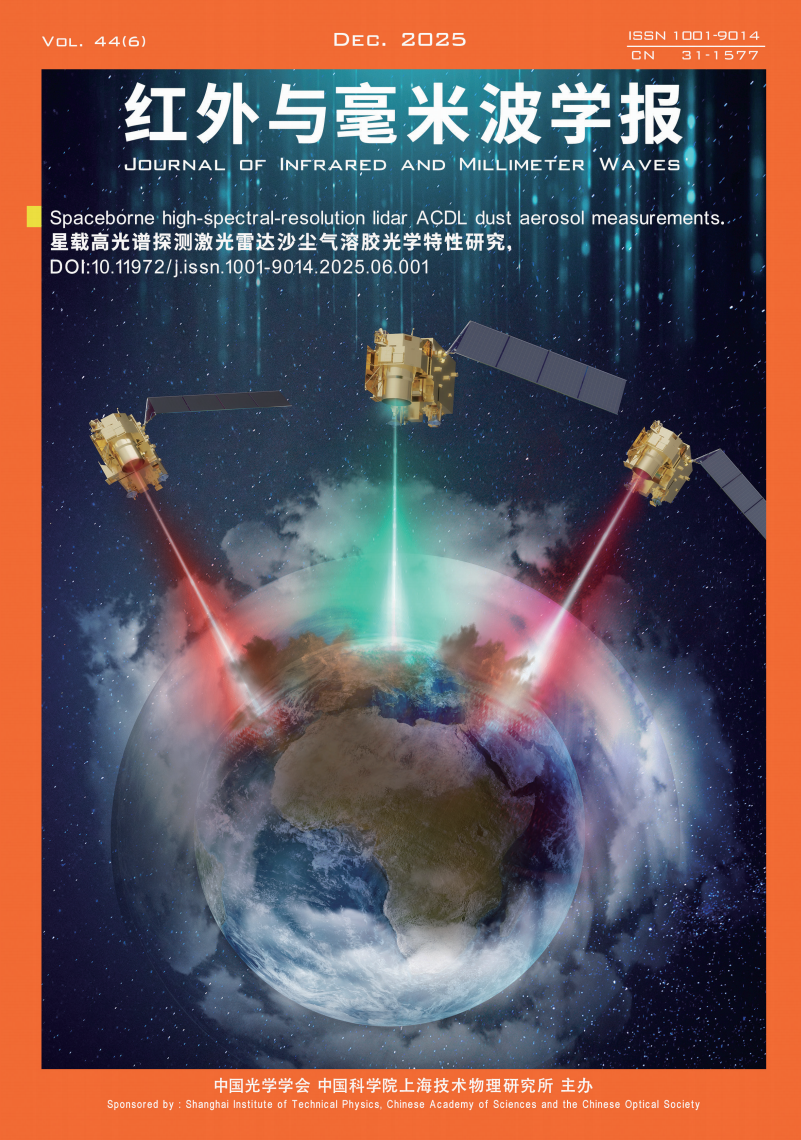
Editor in chief:Jun-Hao CHU
International standard number:ISSN 1001-9014
Unified domestic issue:CN 31-1577
Domestic postal code:4-335
- Most Read
- Most Cited
- Most Downloaded
ESIT 2024: Gathering of Global Minds to Hangzhou for Cutting-Edge Infrared and Terahertz Innovation
The third Earth & Space: from Infrared to Terahertz International Conference (ESIT 2024) successfully took place in Hangzhou, China, from September 20 to 22, 2024. The success of ESIT2024 is attributed to the efforts of numerous organizations, including the Shanghai Institute of Technical Physics, Chinese Academy of Sciences(SITP), Hangzhou Institute for Advanced Study, UCAS, Institute of Optoelectronics, Fudan University, Innovation Center for FengYun Meteorological Satellite (FYSIC), Kunming Institute of Physics, and North China Institute of Optoelectronics Technology. Together, they created a platform for vibrant discourse and fruitful collaboration among experts in various fields.the conference provided a premier platform for international collaboration on cutting-edge developments in infrared, terahertz, and space exploration technologies.

The conference theme, "From Infrared to Terahertz: Connecting Earth and Space," united experts from around the globe to exchange insights on the latest technological advancements and research in these critical areas. Over three days, discussions centered on innovations in infrared and terahertz technology, breakthroughs in space exploration, and applications in remote sensing. This cross-disciplinary event has been a key driver for scientific cooperation and innovation across multiple fields, reinforcing ESIT’s commitment to shaping the future of these technologies.
ESIT 2024 attracted over 600 prominent experts and scholars, including Chinese Academy of Sciences (CAS) academicians Junhao Chu, Jianyu Wang, and ShengCai Shi, as well as Antoni Rogalski from the Polish Academy of Sciences. With Plenary speeches by global experts like Professor Manijeh Razeghi from Northwestern University, USA,Professor Kazuhiko Hirakawa from the University of Tokyo, Japan, and Professor Alexander Shkurinov from the Lomonosov Moscow State University, Russia,the conference showcased a diverse range of high-impact research.

Professor Manijeh Razeghi delivered a groundbreaking plenary talk titled "Next Frontier in Quantum Semiconductor Science and Technology." Her contribution to the development of next-generation infrared detectors continues to advance the field, and the organizing committee expressed deep gratitude for her participation.

Professor Razeghi also received an editorial board certificate for the Journal of Infrared and Millimeter Waves (JIMW) from conference chair Junhao Chu.

Professor Kazuhiko Hirakawa, an expert in terahertz nanostructures from the University of Tokyo, highlighted his research on "Fast and Sensitive Bolometric Terahertz Detection at Room Temperature through Thermomechanical Transduction." With a long list of accolades, including the Leo Esaki Prize, his insights brought exciting new perspectives to terahertz detection technologies.

He was also received an editorial board certificate for the Journal of Infrared and Millimeter Waves (JIMW) from conference chair Junhao Chu.

Another highlight was the plenary talk by Alexander Shkurinov, professor at Lomonosov Moscow State University, Russia, on "From Ewald–Oseen Extinction Theorem to the Stimulated THz Emission." A renowned figure in the development of femtosecond laser techniques and THz spectroscopy, Professor Shkurinov’s contributions continue to advance the field of THz science.

He too was honored with an editorial board membership in JIMW.
Both Professors Hirakawa and Shkurinov, in addition to their prestigious academic backgrounds, bring with them a wealth of experience and achievements that will undoubtedly strengthen the journal's editorial board and contribute to the continued success Journal of Infrared and Millimeter Waves .
The conference featured four key symposia: Infrared Frontier Physics and Technology, Terahertz and Millimeter Waves, Remote Sensing and Space Exploration, and Digital Earth and Intelligent Cognition. Esteemed speakers such as Nathan Stott, Piotr Martyniuk, and Guoying Zhao engaged in thought-provoking discussions on topics ranging from quantum well infrared detectors to digital earth technologies.
The forum’s theme of connecting earth to space emphasized the importance of infrared and terahertz technologies in space exploration. As part of the space exploration symposium, experts discussed advancements in sensors that will enable more precise remote sensing and greater insights into space environments.
In addition to the academic talks, ESIT 2024 offered a variety of engaging events aimed at fostering industry-academia collaboration and supporting young researchers. The Infrared Photonics Industry Technology Forum explored technology transfer and applications, while the Young Scientists Forum provided a platform for emerging researchers to showcase their work. The Editorial Board Meeting of JIMW discussed ways to further enhance the journal’s impact on global infrared and millimeter-wave research.
One of the most exciting features of ESIT 2024 was the Insight into the Future: Infrared and Millimeter-Wave Science Festival, which combined academic discussions with interactive activities. This event fostered collaboration, stimulated creative thinking, and deepened relationships among participants.
ESIT 2024’s success marks another milestone in the development of the Earth & Space Conference series, which began in 2022. Having been held in picturesque locations like Nantong, Shanghai, and now Hangzhou, the conference continues to gain international recognition for its focus on infrared science, terahertz technology, and space exploration. As ESIT grows, it will undoubtedly remain a vital platform for global cooperation and innovation in these critical research areas.
Written by editor Minhao Zhang

Editor in chief:Jun-Hao CHU
International standard number:ISSN 1001-9014
Unified domestic issue:CN 31-1577
Domestic postal code:4-335